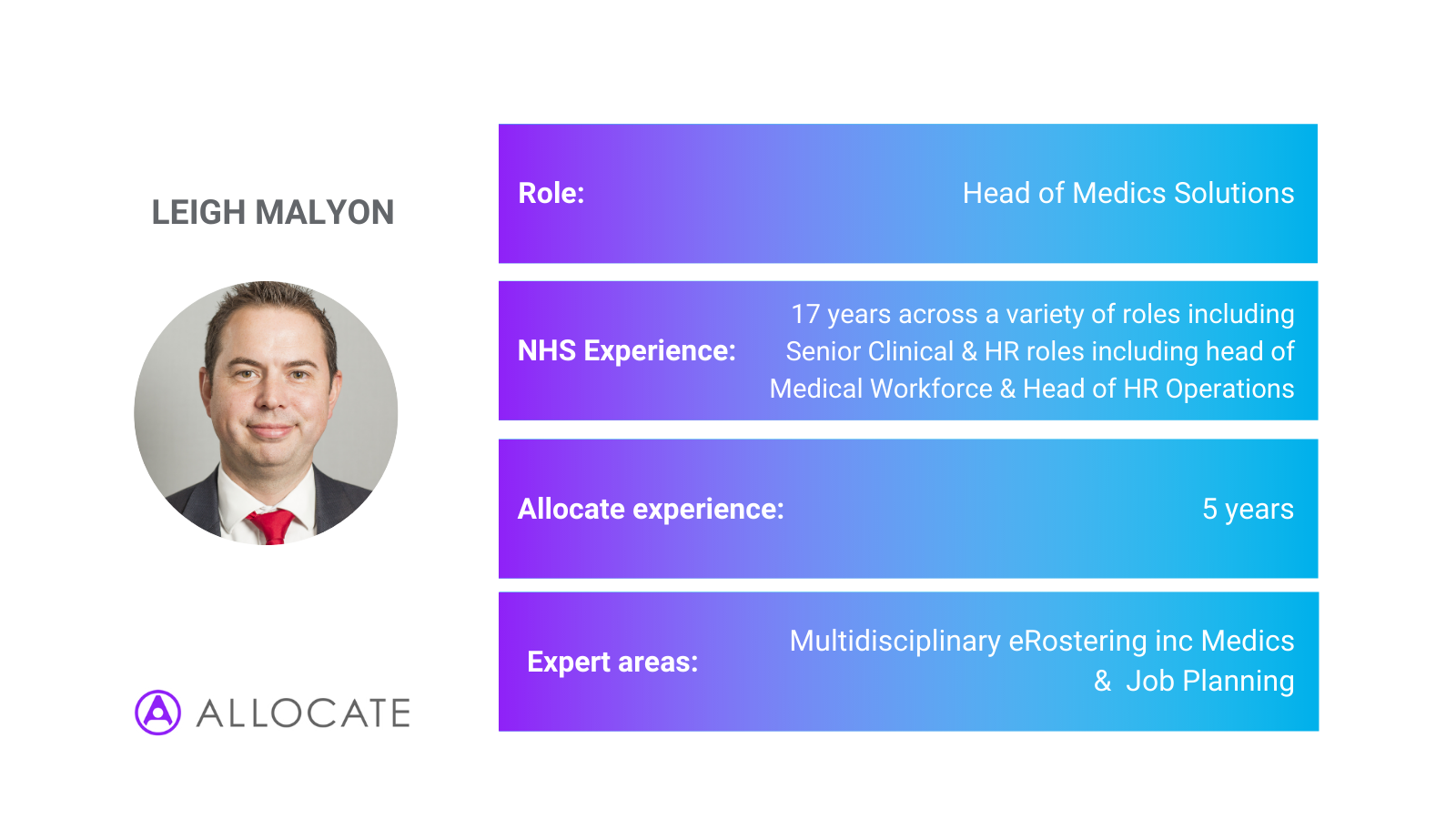How technology has underpinned NHS Covid-19 operation
Leigh Malyon, Head of Medics from Allocate looks at how workforce management software has enabled healthcare teams to take a proactive approach to Covid-19 planning
Workforce technology has fast become vital for NHS trusts in managing staff and ensuring the right people are in the right place at the right time. But Covid-19 has put this technology to the test over the past few months and has moved its role from vital to indispensable. Never before have trusts had to deal with such huge staff demand and disruption as has been placed on the workforce by Covid-19. Visibility of a trust’s workforce, and more importantly its skills and experience, has been vital in understanding how to re-deploy and plan for the requirements of a Covid-19 operation.
But how have trusts coped to date and worked in practice? We spoke to two trusts, Royal Bournemouth and Christchurch Hospitals NHS Foundation Trust (now part of the University Hospitals Dorset NHS Foundation Trust) and Central London Community NHS Trust to understand how technology has aided and driven their Covid-19 planning.
Resource planning at any given time within the NHS is a complex task. With a combination of substantive, bank and agency staff to roster, ensuring the right skills are in the right place to keep clinics running, precision planning is crucial, but throw the uncertainty and enormity of Covid-19 into the mix, and the complexity multiplies exponentially.
In short, the NHS in March faced its greatest ever challenge; how could it match the predicted influx of patients needing care due to Covid-19 with the people it could marshal? Get it right and the NHS could just about cope but get it wrong and patients or service users would undoubtedly die in greater numbers. And it’s not just Covid-19 patients who would suffer, NHS staff burnout is a very real thing.
How would the NHS balance sufficient care for an unknown number of incoming Covid-19 patients, decide which clinics were essential, which had to close (and when) and ensure staff were not working around the clock to cope?
The answer lay in early planning using technology as the enabler.
Rostering software would provide the right data to make the right decisions at the right time, prioritising staff resources to the most acute requirements, so driving efficiency and accelerating effectiveness of delivery of care. Indeed, in speaking to two NHS trusts recently, both attributed their ability to cope to early, technology-assisted planning, using rostering software, and including as many consultants as possible on the planner in addition to nursing staff and junior medics.
Data from rostering software enables trusts to gain immediate visibility of staff availability across the board, but there are two key functions which mean the difference between survival, or not. Absence reporting and skills allocation.
Absence Management
Clearly during a pandemic, planning for staff absences forms a major part of resource allocation and Covid-19 brought with it a new set of complex eventualities for staff absence. A range of new options had to be catered for: self-isolation, shielding, sickness due to Covid-19, working from home due to Covid-19 concerns and isolating due to a household member being tested positive for Covid-19 were just some of the options. An efficient rostering software solution should help adapt to unforeseen circumstances and provide support when planning staff allocation – both rostered and unrostered – on site.
Indeed, accurately recording absence on a system offered the NHS immediate visibility of staff availability and was one of the most vital people management functions for healthcare organisations as they responded to Covid-19. Looking ahead to the coming weeks, this will remain vital as trusts continue to respond to winter pressures and the second wave of the infection.
Skills allocation
Investing in the right rostering solution can also enable trusts to marry the skills of staff available versus the skills requirement to ensure the right staff with the right skills are available in the most critical of services. Having this visibility of staff skills across wards and departments allows nursing leaders to maintain safe and compliant patient care based on patient numbers and acuity and dependency and avoids under- or over-staffing. It also allows for the more efficient use of temporary personnel by ensuring the optimum use of substantive staff.
Planning ahead
As you reflect on your organisations response to the unprecedented challenges of 2020, it’s worth considering if you have the right technology in place to support you in the coming months.
Here are my top three tips for consideration as you begin your planning:
- Building rotas and subsequent plans take time in the beginning, so it’s worth starting now so that, as the winter progresses, the process becomes more efficient and admin staff are freed up to help out where needed. There will undoubtedly be challenges in ensuring all staff have adequate leave and this is area where the right system can really make a difference.
- It’s crucial that *all* staff are on the roster, including consultants. Share early success stories where this has worked to encourage participation in wider departments. Good rostering solutions give staff control and can be a force for good in helping balance their work and home life.
- Look at staff who have transferrable skills. You can’t always redeploy staff from one department to another just because they have the hours available if they don’t have the right skills. Longer term, it’s worth considering how rostering data can have material value in determining future training and development requirements across the workforce.
- With all eyes now on local R rates, and winter well underway, plans need to be in place to ensure a rapid response to getting the right care to the right patients. Having the right tech in place will ensure provision of the most efficient service possible, not only saving lives but also ensuring the needs of the NHS’s most valuable resource, its staff, are taken care of.
If you would like to further explore any of the points made in the article, please get in contact with us via [email protected]. Our team will be more than happy to support you and share our experiences.
Connect with Leigh Malyon: LinkedIn | Twitter: @Leighjmalyon






